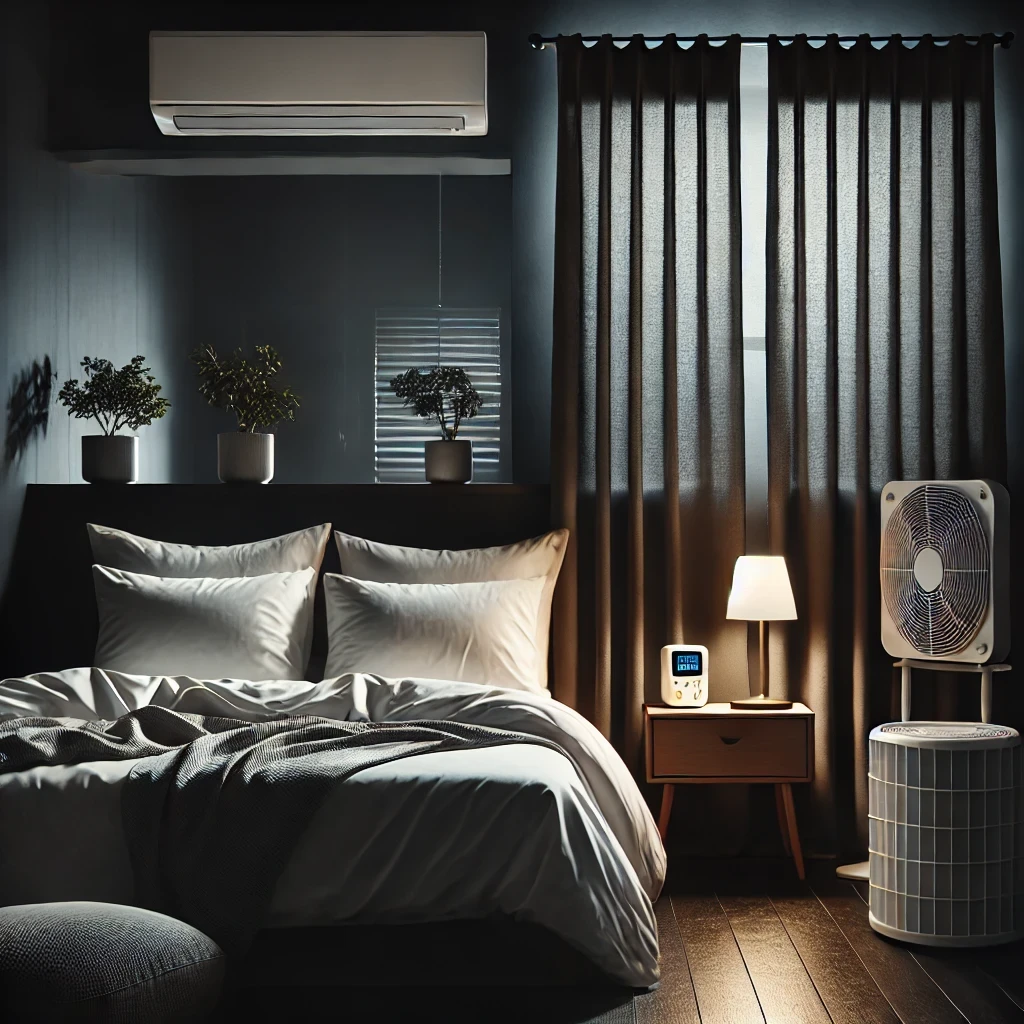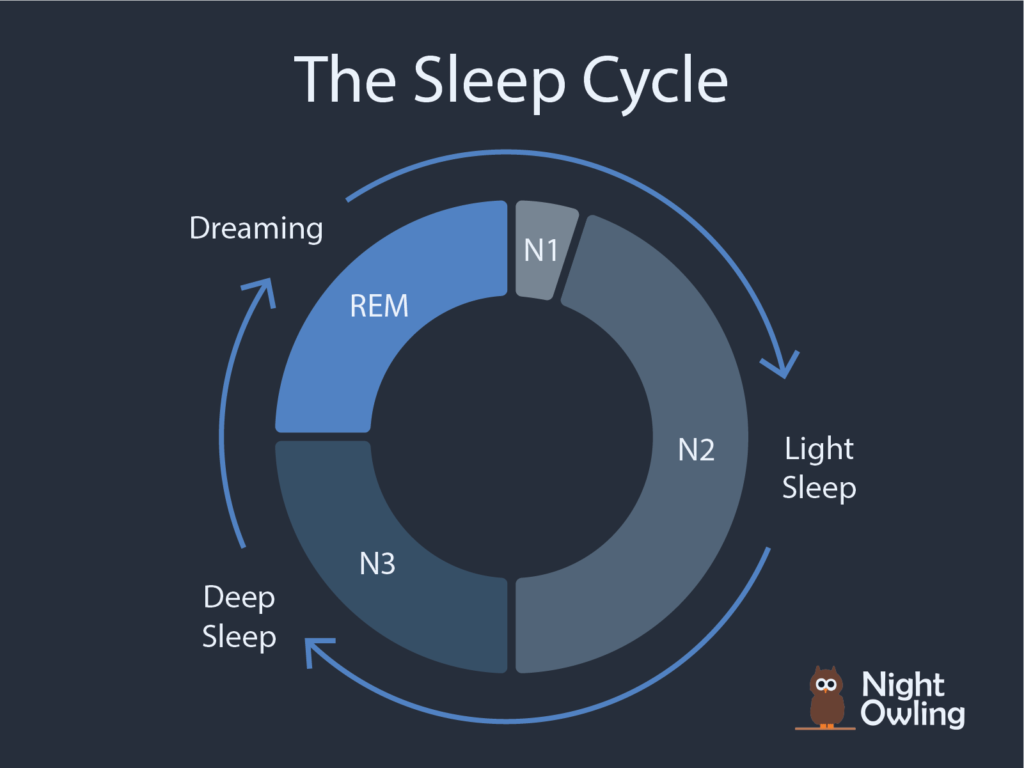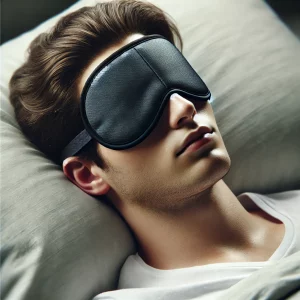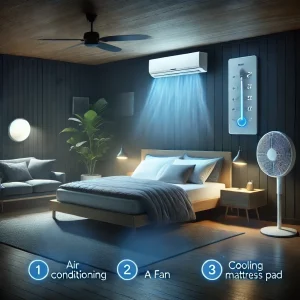Sleep Strategies for Night Workers: Your Guide to Better Rest
Discover the science behind night work sleep challenges and learn evidence-based strategies to improve your rest. We’ll cover a range of topics and provide practical solutions to help you achieve better sleep quality and overall well-being as a night worker.

The Biology of Night Shift Sleep Challenges
Night shift work doesn’t just make you tired — it alters the biological systems that control your energy, alertness, and rest. To understand how to improve your sleep, we first need to look at what’s happening inside your body.
Before diving in, watch What is a Circadian Rhythm? for a quick overview of how night work affects your body’s internal clock—and what you can do about it.
Circadian Rhythms: Your Internal Clock
Your body operates on a roughly 24-hour cycle known as the circadian rhythm. This internal clock regulates various physiological processes.
Physiological Processes Regulated by Our Circadian Rhythms:
- Sleep-wake cycles
- Hormone production (particularly melatonin and cortisol)
- Body temperature fluctuations
- Digestive processess
For night workers, the mismatch between your work schedule and your body’s natural rhythm can lead to a condition known as “circadian misalignment.” This misalignment occurs because your body is naturally programmed to be awake during daylight hours and asleep at night.
When you work night shifts, you’re essentially asking your body to function in opposition to its ingrained patterns. This can result in difficulty falling asleep during the day, feeling drowsy during your shift, and experiencing a range of health issues over time. The prevalence of short sleep duration (<7 hours per night) among night shift workers is 61.8%, compared to 37.6% overall among workers. Additionally, 30.7% of night shift workers report poor sleep quality compared to 19.2% among all workers. Insomnia prevalence is also higher in night shift workers at 18.5% compared to 8.8% overall (Yong et al., 2016).
The Role of Light
Light is the primary zeitgeber (time giver) for your circadian rhythm. It plays a crucial role in regulating your sleep-wake cycle and other bodily functions. When your eyes perceive light it triggers a cascade of biological responses.
Melatonin Suppression:
Light exposure suppresses the production of melatonin, often referred to as the “sleep hormone.” Melatonin is crucial for inducing sleep and maintaining a healthy sleep cycle.
When you’re exposed to bright light, especially sunlight, after your night shift, your body’s natural melatonin production is disrupted, making it difficult to fall asleep.
Cortisol Increase:
Light exposure also stimulates the production of cortisol, often called the “wake hormone.” Cortisol levels naturally rise in the morning to help you wake up and feel alert. For night workers, this natural cortisol rhythm can be thrown off, leading to feelings of alertness when you should be winding down for sleep.
Body Temperature Regulation:
Your circadian rhythm also influences your core body temperature. Typically, your body temperature drops slightly as you prepare for sleep. Light exposure can interfere with this process, keeping your body temperature elevated and making it harder to fall asleep.

When you’re exposed to sunlight after your night shift, it can make it difficult for your body to recognize that it’s time to sleep. This makes it extremely challenging for night workers to achieve truly restful sleep during daylight hours, often leading to chronic sleep deprivation and its associated health risks.
Sleep Stages and Night Work
Sleep occurs in cycles of approximately 90 minutes, moving through several stages:
- Light sleep (N1 and N2)
- Deep sleep (N3)
- REM sleep

Each of these stages plays a vital role in physical and mental restoration. However, night shift workers often experience disruptions to this natural sleep architecture:
Shortened sleep duration:
- The urge to sleep is strongest in the early morning hours, coinciding with when many night shift workers are just ending their shifts. This can lead to shorter overall sleep times as workers struggle to fall asleep during the day. On average, night shift workers experience sleep durations of 2.1 hours before the first night shift, 6.1 hours between two night shifts, and 4.2 hours after the last night shift (Knauth et al., 1980).
Deep Sleep and REM stages:
- These stages are crucial for physical recovery, memory consolidation, and emotional regulation. Shortened sleep duration means less time spent in deep sleep and REM stages which can lead to cognitive impairments, mood disorders, and physical health issues.
More frequent awakenings:
- Daytime sleep is often lighter and more fragmented due to environmental factors like light and noise, as well as the body’s natural inclination to be awake during these hours. This fragmentation also results in night shift workers spending less uninterrupted time in deep sleep and REM stages, which are necessary for complete mental and physical restoration.
- These disruptions can lead to sleep debt, which accumulates over time and can have serious health implications.
Still struggling to sleep even after making changes? Try our Advanced Sleep Help tool for in-depth, personalized strategies tailored to night shift challenges.
Evidence-Based Strategies for Better Sleep
Understanding these biological factors, let’s explore strategies to improve your sleep quality:
1. Optimize Your Sleep Environment
Creating a sleep-conducive environment is crucial for overcoming the biological challenges of day sleeping. This involves addressing three key factors: light, temperature, and noise.
Block Out Light
Invest in high-quality blackout curtains or shades. Look for products that claim to block 99-100% of light. Some options even have thermal properties, which can help regulate room temperature. Consider using multiple layers of curtains for maximum light blocking. You might also want to cover any small light sources in your bedroom, such as LED lights from electronics.
If light still penetrates, consider using a sleep mask. Look for masks made with breathable, hypoallergenic materials that contour to your face to block out light effectively. Some advanced sleep masks even incorporate light therapy features to help regulate your circadian rhythm.

Why it works: Complete darkness signals to your body that it’s time to produce melatonin, helping to induce sleep even during daylight hours. By creating an artificially dark environment, you’re mimicking nighttime conditions and encouraging your body to initiate its natural sleep processes.
Control Temperature
Maintain a cool sleeping environment (60-67°F or 15-19°C). Consider using air conditioning, fans, or even cooling mattress pads. If you live in a warm climate, you might want to invest in blackout curtains with thermal insulation properties to keep your room cool during the day.
Use sheets and pajamas made from natural, breathable fabrics like cotton, bamboo, or moisture-wicking materials. These fabrics help regulate body temperature and prevent overheating during sleep.

Why it works: Your body temperature naturally drops as you fall asleep. A cool environment facilitates this process, making it easier to fall and stay asleep. By creating optimal temperature conditions, you’re supporting your body’s natural sleep initiation process.
Want to know what really affects your sleep on night shift? Watch The Core Factors of Sleep as a Night Shift Worker to learn how temperature, darkness, and wind-down routines help support deeper rest.
Minimize Noise
White noise machines can create a consistent background sound that can mask disruptive noises. There are various types of white noise, including pure white noise, pink noise, and nature sounds. Experiment to find which type works best for you.
Look for earplugs with a high Noise Reduction Rating (NRR). Custom-molded earplugs can provide superior noise reduction and comfort for long-term use.
Why it works: Unexpected noises can cause micro-awakenings, disrupting your sleep cycles. Consistent background noise or sound blocking can prevent these disruptions by masking sudden changes in noise levels. This helps maintain sleep continuity and improves overall sleep quality.
2. Manage Light Exposure
Strategic light management can help reset your circadian rhythm to align with your work schedule. This involves carefully controlling your exposure to light both during your shift and after work.
Watch this video to find out how light really affects your rest? How Hormones Affect Your Sleep talks about how screen time and sunlight disrupt melatonin and what you can do to reset your sleep hormones.
During Your Shift
Exposure to bright light (at least 1000 lux) during your work hours can help shift your circadian rhythm. Consider light therapy lamps or light boxes. These devices simulate sunlight and can be used for 30-60 minutes at the beginning of your shift and at regular intervals throughout.

Why it works: Bright light exposure suppresses melatonin production and increases alertness, helping to shift your body’s perception of “daytime” to align with your work hours. This can help you stay more alert during your shift and make it easier to sleep when you get home.
After Your Shift
Wear blue light blocking glasses on your commute home and for any screen use before sleep. These glasses filter out the blue light wavelengths that most strongly suppress melatonin. Look for glasses that block at least 90% of blue light for maximum effectiveness.
Gradually decrease your light exposure in the hours leading up to your bedtime. Use dimmer switches or low-wattage bulbs in your home. Consider using red or amber light bulbs in your bedroom and bathroom, as these wavelengths have the least impact on melatonin production.

Why it works: Reducing blue light exposure allows your body to naturally increase melatonin production, preparing you for sleep. By creating an artificial “sunset” period, you’re signaling to your body that it’s time to wind down and prepare for rest, even if it’s daytime outside.
Check out our Light Management Optimizer to get personalized light strategies that support your rhythm and promote better sleep.
3. Establish Consistent Sleep Patterns
Consistency reinforces your body’s adapted sleep-wake cycle. This can be challenging for night shift workers, but it’s essential for long-term sleep health.
Set a Consistent Schedule
Maintain the same sleep and wake times, even on days off. This might mean staying up later on your days off to maintain a similar schedule. While it can be tempting to revert to a “normal” daytime schedule on your days off, this can further disrupt your circadian rhythm and make it harder to adjust back to your work schedule.
Use sleep cycle calculators to optimize your sleep schedule. These tools can help you determine the best times to sleep and wake based on typical sleep cycle lengths, ensuring you’re not waking up in the middle of a deep sleep phase.

Why it works: Consistent sleep-wake times help reinforce your body’s adapted circadian rhythm, making it easier to fall asleep and wake up.
Create a Pre-Sleep Routine
Begin winding down about an hour before your planned bedtime. This might include activities like taking a warm bath, reading a book, or practicing relaxation techniques. Avoid stimulating activities or stressful conversations during this time.
Incorporate relaxation techniques like Progressive Muscle Relaxation or deep breathing exercises. These techniques can help reduce stress and prepare your body for sleep. Progressive Muscle Relaxation involves tensing and then relaxing each muscle group in your body, while deep breathing exercises focus on slow, controlled breaths to induce relaxation.
Why it works: Consistent sleep-wake times help reinforce your body’s adapted circadian rhythm, making it easier to fall asleep and wake up. Over time, your body will learn to anticipate sleep at certain times, making it easier to fall asleep even during daylight hours.
Need help relaxing after work? Use our Wind-Down Routine Builder to create a calming pre-sleep routine that fits your night shift lifestyle.
Empower Your Workplace: Advocate for Better Sleep Support
As a night shift worker, you play a crucial role in your organization. Your well-being directly impacts your performance, safety, and overall job satisfaction. Here’s how you can advocate for better sleep support in your workplace:
- Share Your Knowledge: Inform your supervisors and HR department about the unique sleep challenges faced by night shift workers. Direct them to resources like NightOwling.com for more information.
- Suggest a Sleep Health Program: Propose that your company implement a sleep health program for night shift workers. NightOwling.com offers corporate solutions that can be tailored to your organization’s needs.
- Request a Sleep-Friendly Environment: Advocate for improvements in your work environment that support alertness during night shifts, such as better lighting or designated rest areas.
- Promote Regular Health Check-ups: Encourage your employer to provide regular health check-ups for night shift workers, including sleep health assessments.
A well-rested workforce is a more productive and safer workforce. By advocating for better sleep support, you’re not just helping yourself, but all your fellow night workers.
Conclusion: Embracing Better Sleep
Understanding the science behind your sleep challenges as a night shift worker is the first step towards improving your sleep quality. By implementing these evidence-based strategies and advocating for workplace support, you can significantly enhance your sleep health.
At NightOwling.com, we’re committed to supporting night workers like you in achieving better sleep and overall well-being. Our platform offers extensive resources to assist, including:
- Personalized sleep improvement plans based on cutting-edge sleep science
- Interactive content created by sleep and night work experts
- A supportive community of fellow night workers
- AI-powered tools to help you optimize your sleep environment and habits
Start the journey to better health on the nightshift tonight
We are looking for night workers to get in touch and get early access to our platform.
And don’t forget to let your employer know about our corporate solutions – together, we can create a more sleep-friendly environment for all night shift workers.
Remember, quality sleep is not a luxury—it’s a necessity, especially for those who keep our world running through the night. You deserve restful, restorative sleep, no matter when your shift starts or ends.
Sweet dreams, nightowls 🌑🦉!
References
- Boivin, D. B., Boudreau, P., & Kosmadopoulos, A. (2021). Disturbance of the circadian system in shift work and its health impact. Journal of Biological Rhythms. Link
- Burgess, H. J., Sharkey, K. M., & Eastman, C. I. (2002). Bright light, dark and melatonin can promote circadian adaptation in night shift workers. Sleep Medicine Reviews, 6(5), 407-420. Link
- James, F. O., Cermakian, N., & Boivin, D. B. (2007). Circadian rhythms of melatonin, cortisol, and clock gene expression during simulated night shift work. Sleep, 30(11), 1427-1436. Link
- Sack, R. L., Blood, M. L., & Lewy, A. J. (1992). Melatonin rhythms in night shift workers. Sleep, 15(5), 434-441. Link
- Steinach, M., & Gunga, H. C. (2019). Circadian rhythm and stress. Stress Challenges and Immunity in Space. Link
- Walker, W. H., Walton, J. C., DeVries, A. C., & Nelson, R. J. (2020). Circadian rhythm disruption and mental health. Translational Psychiatry, 10, 1-13. Link

![Photo of [object Object] in undefined](https://nightowling.com/wp-content/uploads/2025/11/image-17.png)
